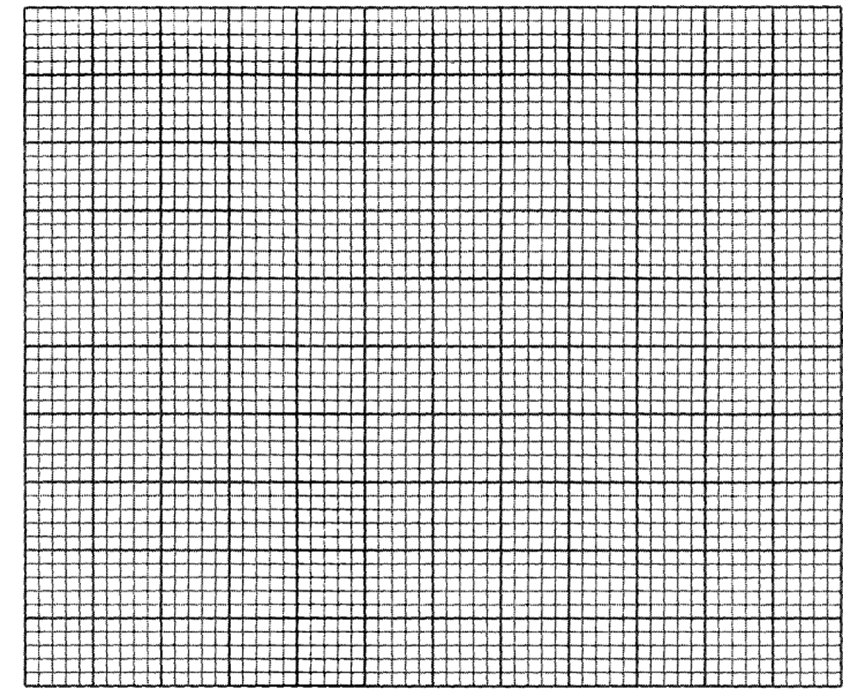2019 KCSE Chemistry paper 3 Past Paper
Practical
1. You are provided with:
•Solution A aqueous Iron(III) sulphate.
• Solution B aqueous potassium iodide.
• Solution C mixture of aqueous starch and sodium thiosulphate solution.
You are required to determine the rate of reaction between aqueous Iron(III) sulphate (Solution A) and aqueous potassium iodide (solution B).
Procedure:
(i) Place 5 test tubes on a test tube rack and label them 1, 2, 3, 4 and 5. Fill a burette with solution A.
To each test tube place 3 cm3 of solution A from the burette.
(ii) Clean the burette and fill it with solution B. Place 8 cm3of solution B into a 100 ml beaker from the burette.
(iii) Using a 10 ml measuring cylinder, add 2 c 3 of solution C to the beaker containing Solution B followed by 7 cm3 of distilled water measured using the same 10m1 measuring cylinder.
(iv) Pour the contents of test tube 1 to the mixture in the beaker and immediately start the stop watch.
Swirl the contents of the beaker.
Record in table 1 the time taken for a blue colour to just appear.
Measure the temperature of the final mixture and record in the space provided.
Wash the beaker and proceed to step (v).
Place 6 cm3 of solution B into 100 ml beaker from the burene.
Add 2 cm3 of solution C followed by 9 cm3 of distilled water.
Add solution A in test tube 2 to the mixture in the beaker and immediately start the stop watch.
Swirl the contents of the beaker.
Record in table 1 the time taken for a blue colour to just appear. This is experiment 2.
(vi) Wash the beaker. Repeat step .
(v) With solution A in test tubes 3, 4 and 5 with corresponding volumes of solution B, solution C and distilled water as indicated in table 1 for experiments 3, 4 and 5.
(a) Temperature of final mixture……………………….°C (1 mark)
Experiment | Volume (cm³) | Time (seconds) | |||
|---|---|---|---|---|---|
| Solution A | Solution B | Solution C | Distilled water | ||
| 1 | 3 | 8 | 2 | 7 | |
| 2 | 3 | 6 | 2 | 9 | |
| 3 | 3 | 5 | 2 | 10 | |
| 4 | 3 | 4 | 2 | 11 | |
| 5 | 3 | 3 | 2 | 12 |
(a) Complète table 2 for each experiment by: (3 marks)
(i) Calculate the square of volume of solution B,B2 and filling in the table.
(ii) calculating the rate of reaction which is given by the expression Rate 1/100 x 1000s-1 and filling in the table.
Experiment | B² | Rate = 1/time x 1000s-1 |
|---|---|---|
| 1 | ||
| 2 | ||
| 3 | ||
| 4 | ||
| 5 |
(d) Plot a graph of rate (y-axix)against B2

(e) Using the graph, determine the time that it will take experiment is repeated using the following mixture:
Volume(cm³) of | |||
|---|---|---|---|
| Solution A | Solution B | Solution C | Distilled water |
| 3 | 7 | 2 | 8 |
(C) (f).In this experiment the rate of reaction was determined with respect to potassium iodide.
Describe how the rate of the reaction can he determined with respect to Iron(III) (3 marks)
2. You are provided with solid P. Carry out the followin2 tests and record the observations and inferences in the spaces provided.
(a) Place about one-third of solid P in a dry test tube and heat it strongly.
Test any gases produced with red litmus paper.
| Observation | Inferences |
|---|---|
(b) Place the remaining amount of solid P in a boiling tube.
Add about 15 cm3 of distilled water and shake to dissolve the solid.
Use about 2 cm3 portions of the solution in a test tube for each of the tests (i) to (iv).
(i) To the first portion of the solution add aqueous sodium hydroxide.
(ii) To the second ponion of the solution add 2 or 3 drops of aqueous barium nitrate
| Observation | Inferences |
|---|---|
(iii) To the third portion of the solution add 2 or 3 drops of aqueous lead(II) nitrate. Warm the mixture.
| Observation | Inferences |
|---|---|
(iv) To solid D in the test tube add about 2cm of distilled water .shake and labe; this as chlorine water.
Add all the chlorine water to Ito: fourth re/Tiffin (if Shake tile mixture and then add 3 drops of starch solution,
| Observation | Inferences |
|---|---|
(c) Give the formulae of the ions present in solid P: (i) cation ……….. (½ mark)
(ii) Anion …………….(½ mark)
3. You are provided with liquid Q.
Carry out the following tests and record the observation and inferences in the spaces provided.
(a) Place 2 drops of liquid Q on a watch glass. Ignite the liquid with a bunsen burner flame.
| Observation | Inferences |
|---|---|
Place about 2cm3 of liquid Q in a test tube.Add about 2cm3 of distilled water and shake the mixture.
| Observation | Inferences |
|---|---|
(c) To about 2 cm3 of liquid Q in a test tube, add all of the solid sodium hydrogen carbonate provided.
| Observation | Inferences |
|---|---|
(d) To about 2 cm3 of liquid Q in a test tube, add 2 or 3 drops of bromine water.
| Observation | Inferences |
|---|---|
(e) To about 2 cm3 of liquid Q in a test tube, add 2 or 3 drops of acidified potassium dichomate(VI) and warm the mixture.
| Observation | Inferences |
|---|---|

